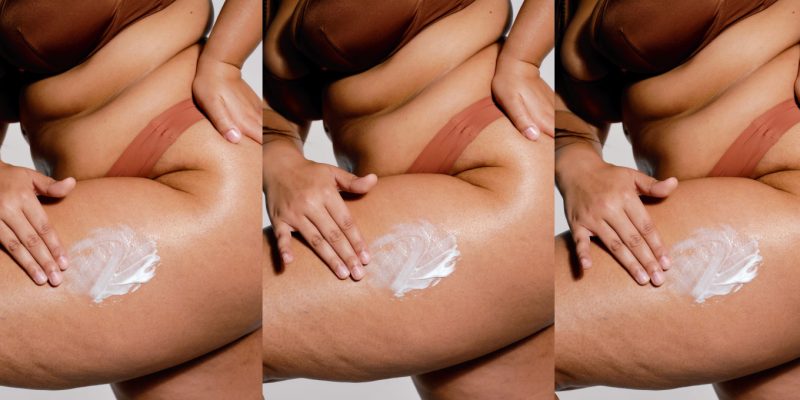Beauty
Pale is in! Sunscreen tips
Get the freshest look this summer, your skin au naturel!
by : Jennifer Weatherhead- Jun 6th, 2007

Forget the bronzy glow that so many sport on their skin during the summer (courtesy of faux tans, we hope!). This summer it’s all about opting for a healthy, natural look — your skin sans sun! Check out ELLE’s tips on how to stay protected from the rays this year and why you should not be a fan of the tan.
What to look for: Sunscreen used to be sticky, pasty, and would leave white streaks galore (remember the not-so-fashionable trend of having a white sunscreened nose?). Not to mention either a chemical smell, or you would smell like a giant coconut. Thank goodness for the sunscreen revolution! These days, Coppertone makes an oil-free, fragrance-free, non-irritating, waterproof sunscreen that glides on streak-free (Coppertone Spectra3 coppertone.ca).
How to apply: The general rule of thumb — one shot glass for your body and 2 tablespoons for your face. Remember to really rub it in and don’t forget your ears, hands and the tops of your feet. Your feet and hands can start to show signs of skin damage and age sooner than other places, so keep them well covered! You should also know what SPF level you need. Fair skinned people who tend to burn easily should be wearing a higher SPF at all times. But even darker skinned beauties need to have a minimum of SPF15. “You should use at least a SPF of 15. I recommend a SPF30 for everyone now. SPF30 is the new 15,” says a representative at Coppertone.
When to apply: Make sunscreen your new moisturizer once you get out of the shower in the morning. With the added moisturizers in the sunscreen, like Aloe and vitamin E, it’s an easy way to make sure you have sunscreen on before heading out and keeps your skin silky smooth and soft. Reapply every two hours if you are outside a lot. Even if the sunscreen is waterproof, it’s a good idea to reapply after going for a swim or sweating. Working in an office? Touch up your face, legs and arms with sunscreen before heading out for lunch or home. The sun is at it’s peek from 11:00 am to 4:00 pm during the day, so if possible, stay out of the sun, get in some shade, wear your sunglasses, and reapply your sunscreen especially during these times.
What’s new?: Coppertone’s new Spectra line has a special formulation that blocks the sun’s rays before they even enter the skin, thanks to micronized zinc oxide. The micronized (very fine particles) formula of zinc provides an invisible barrier that causes the rays to bounce off your skin, unlike non-micronized products that allow the rays to enter the skin (then use chemicals to make the rays less damaging). It’s also what helps it glide on smooth and not leave a white residue. Although it’s impossible to prevent 100% of the sun’s rays from entering your body, it’s possible to stop 99% of the rays.
New spray versions allow you to apply without rubbing it in (just spray an even layer on your skin and allow it to absorb) making it ideal for quick touch ups and a day at the beach, or hard to reach places like your back.
Tips to prevent sun damage on the next page…
Romancing the sun: A healthy relationship with the sun
Bronzed beauty: Be a golden girl, but play it safe
The damage factor: Think about this before you head out minus your sunscreen. Even the slightest tan (no matter how healthy and golden you think it looks) has damaged your skin — permanently. Rebecca Woodhouse, a Nurse with Quality Health Services says that 90% of all skin cancers are preventable and the majority of skin cancers are sun damage related. A severe or slight burn can mean dead skin cells (if you have white spots on your skin that stay white even after tanning, those skin cells are dead). Sun exposure over time will lead to wrinkles, blotches and dark, uneven spots. “The early signs of skin damage are new spots and wrinkles,” explains Woodhouse. “You really have to keep an eye on your skin, if you see something new, not uniform, or discoloured, go to your doctor.”
Here are some ways to keep your skin protected this summer.
Avoid mid-day exposure
The sun’s rays are strongest between 11 a.m. and 4 p.m. Try to avoid being in the sun for long periods during this time.
Find shade
If you do have to be outdoors find a tree or use an umbrella to create shade.
Check the UV index
Be sure to check out your local weather reports for the latest UV index.
Wear protective clothing
This doesn’t mean covering up completely, but wear clothing that is light-weight and loose fitting to be more comfortable and allow your skin to breathe. Protect your face and head by wearing a hat and sunglasses.
Children are at greater risk
A child’s skin is much more sensitive, but for children under one, sunscreen is not recommended. Make sure they are in shade at all times.
Examine your skin regularly
You are your own best doctor. You know your skin better than any doctor because you are in it 24/7. Look for any changes, new moles, freckles, discolouration, or a change in shape or size of existing moles. If you see something out of the ordinary call you doctor.
Read more:
Summer school: Warm weather body prep
Ray of light: UVA blocks are here!
Summer SOS: Are you – and your skin – ready?
Summer beauty solutions: How to be a beach goddess
Newsletter
Join our mailing list for the latest and biggest in fashion trends, beauty, culture and celebrity.
Read Next

Fashion
Zendaya Welcomes Spring in a Retro Floral and Tulle Dress
Another day, another preppy tennis-core look.
by : Briannah Rivera- Apr 23rd, 2024

Culture
A Joe Alwyn Source Explains Why He Didn’t Want to Talk About Dating Taylor Swift
Following the release of The Tortured Poets Department, new insight about the British actor’s decision emerges.
by : Alyssa Bailey- Apr 23rd, 2024

Culture
This University Elevates Women to New Professional Heights
You shouldn’t have to pause your life to move forward in your career.
by : ELLE Canada- Apr 16th, 2024




